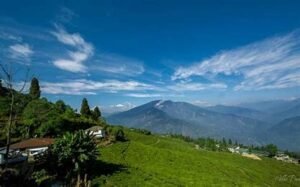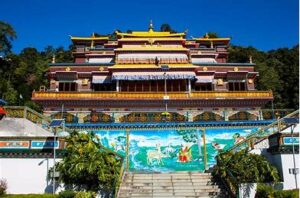Cheiraoba – Manipuri New Year Celebrated with Feasting and Hill Climbing
Introduction
Cheiraoba is a traditional festival marking the New Year in Manipur, a beautiful state in Northeast India. This vibrant festival, celebrated by the Meitei community, symbolizes new beginnings, renewal, and spiritual cleansing. Unlike other New Year celebrations, Cheiraoba is deeply rooted in indigenous beliefs and customs, reflecting the rich cultural heritage of Manipur. It is celebrated with elaborate rituals, grand feasts, and a symbolic hill-climbing tradition that holds deeper philosophical meanings.
The festival is not only a religious or cultural event but also a social occasion that brings families and communities together. Despite modern influences, Cheiraoba continues to thrive as a living tradition, evolving with the times while preserving its core values. Understanding the essence of Cheiraoba provides insights into the broader cultural landscape of Manipur and its unique identity within India.
Historical Roots
Cheiraoba has ancient origins, deeply entwined with the history and folklore of Manipur. The festival has been celebrated for generations, symbolizing the end of the old year and the welcoming of the new. Historically, it was also an occasion for families to unite, settle disputes, and plan for a prosperous future. Oral traditions, including folk tales and songs, describe how the celebration evolved over time, adapting to societal changes while maintaining its core values.
The roots of Cheiraoba can be traced back to the early Meitei civilization, where the festival was observed as a means of paying homage to the deities of prosperity, fertility, and protection. It was believed that proper observance of Cheiraoba rituals would ensure good fortune and harmony throughout the year. Over time, the festival has also become a way to preserve and showcase traditional practices, connecting the past with the present.
Language and Communication
The Meitei language, also known as Manipuri, plays a significant role in Cheiraoba. Prayers, folk songs, and rituals performed during the festival are often in Manipuri, preserving the language’s beauty and cultural significance. Traditional greetings and blessings exchanged during Cheiraoba further strengthen the linguistic heritage of the region.
Communication during Cheiraoba extends beyond verbal language. Symbolic gestures, rituals, and the preparation of special dishes all contribute to a shared understanding of cultural values. The use of Manipuri language during prayers and storytelling sessions also ensures that the younger generations remain connected to their roots.
Festivals and Celebrations
Cheiraoba is marked by elaborate rituals, feasting, and hill climbing. Families clean their homes thoroughly, as it symbolizes purification and the removal of negativity. Special dishes are prepared, and offerings are made to deities to seek blessings for a prosperous year ahead. A unique aspect of Cheiraoba is hill climbing, where people ascend local hilltops as a metaphor for overcoming life’s obstacles and striving for greater achievements.
The festive atmosphere during Cheiraoba is characterized by joy, togetherness, and cultural pride. Various cultural programs, traditional music, and dance performances are organized, providing a platform for artists to showcase their talents. The festival also serves as an opportunity for families to reconnect, reaffirming their bonds through shared customs and practices.
Arts, Crafts, and Music
During Cheiraoba, traditional arts and crafts are often showcased. Intricate handloom textiles, pottery, and bamboo crafts are commonly displayed and exchanged. Folk music and dance performances also take place, with artists using the occasion to celebrate Manipuri heritage through expressive art forms.
Manipuri dance, known for its grace and fluidity, is often performed during Cheiraoba. The music that accompanies these dances is equally captivating, featuring traditional instruments like the Pena, Dhol, and Pung. Artisans also take pride in displaying their craftsmanship, particularly in weaving and pottery, which have been integral to Manipuri culture for centuries.
Cuisine and Culinary Traditions
Feasting is a major highlight of Cheiraoba. Special dishes like “Eromba” (a spicy mashed vegetable dish), “Chak-hao kheer” (black rice pudding), and various fish preparations are prepared. The sharing of food symbolizes unity and prosperity. These culinary traditions not only highlight Manipuri cuisine but also reinforce community bonds.
The meticulous preparation of dishes during Cheiraoba reflects the importance of food as a cultural symbol. Recipes are often passed down from generation to generation, preserving culinary knowledge and skills. Sharing meals with family, friends, and neighbors fosters a sense of community and goodwill.
Attire and Ornamentation
On Cheiraoba, traditional attire is often worn as a mark of respect for customs. Men typically wear dhotis and jackets, while women don beautiful Phaneks (traditional skirts) and Innaphi (shawls). Ornamental jewelry, often handcrafted, adds elegance to the festive appearance.
Traditional clothing serves as a means of cultural expression, highlighting the artistic talent and aesthetic sensibilities of the Manipuri people. During Cheiraoba, these garments are often adorned with intricate embroidery and designs that convey specific meanings related to prosperity, protection, and happiness.
Beliefs and Values
Cheiraoba is deeply connected to the spiritual beliefs of the Meitei people. It reflects values such as purity, renewal, gratitude, and respect for ancestors. Offerings made to deities are intended to invoke blessings for health, happiness, and prosperity in the coming year.
The festival also emphasizes the importance of balance and harmony between the human and natural worlds. Rituals are performed with utmost sincerity and respect, symbolizing the desire for a harmonious relationship with the environment and divine forces.
Customs and Etiquette
During Cheiraoba, people follow specific customs with great reverence. Cleaning the house, preparing special dishes, and performing rituals are all done with meticulous care. Elders are respected, and blessings are sought from them, emphasizing the importance of family and community.
Respecting elders, maintaining cleanliness, and adhering to traditional practices are considered essential aspects of Cheiraoba. Younger generations are encouraged to learn about these customs and participate actively, ensuring their continuation in the future.
Architecture and Symbols
Traditional Manipuri houses and structures are often adorned and maintained during Cheiraoba. Symbolic items like “Mera Thaomei” (a sacred bamboo pole) are displayed as part of the rituals. These architectural symbols are believed to protect households from evil forces.
Cheiraoba also serves as a reminder of the architectural heritage of Manipur, where traditional designs and structures continue to play an important role in cultural identity.
Oral Traditions and Storytelling
Storytelling is a cherished tradition during Cheiraoba. Elders share tales of historical events, folklore, and moral lessons with the younger generation. This practice helps preserve the cultural heritage and ensures that valuable knowledge is passed down.
Interactions with Nature
Hill climbing, a significant part of Cheiraoba, represents humanity’s connection with nature. The practice also highlights the importance of respecting and coexisting with the natural environment, which is central to Manipuri culture.
Challenges and Preservation
Despite its deep-rooted significance, Cheiraoba faces challenges due to modern influences and changing lifestyles. Efforts to preserve its traditions are being made through cultural programs, awareness campaigns, and educational initiatives.
Contributions to the Broader Region and World
The Meitei community’s rich traditions, especially its performing arts, have gained recognition worldwide. Manipuri dance, for example, is renowned for its grace and storytelling. Additionally, the cuisine, crafts, and rituals associated with Cheiraoba contribute to the broader cultural landscape of Northeast India and beyond.
Connection to Northeast India
Cheiraoba is one of many festivals that bind Northeast India’s diverse communities. It shares similarities with other New Year celebrations in the region, emphasizing the cultural unity that exists despite the area’s rich diversity.
Conclusion
Cheiraoba is more than just a festival; it is a celebration of culture, heritage, and community. As generations continue to observe this vibrant tradition, Cheiraoba remains a testament to the resilience and beauty of Manipuri culture.




